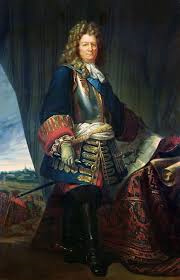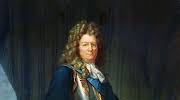VAUBAN
Sébastien LE PRESTRE, marquis de VAUBAN (1er mai 1633 - 30 mars 1707)
VAUBAN is a French engineer and military architect. Named Marshal of France by Louis XIV, he is not a native of Flanders but has  left his marks that are very prized by tourists and locals. In October 1706, Vauban is in Dunkirk, a strong city that he considers his greatest success and that he has transformed into an "impregnable city" : a formidable group of defence forts, buildings, piers, ditches filled with water, and a basin that can hold more than forty high edge ships still afloat, even at low tide, thanks to a sea-lock.
left his marks that are very prized by tourists and locals. In October 1706, Vauban is in Dunkirk, a strong city that he considers his greatest success and that he has transformed into an "impregnable city" : a formidable group of defence forts, buildings, piers, ditches filled with water, and a basin that can hold more than forty high edge ships still afloat, even at low tide, thanks to a sea-lock.
Why is he in Dunkirk? Because the king entrusts to him the command of the maritime border of Flanders, then seriously threatened. He has permission to build an entrenched camp at Dunkirk, then a second between Dunkirk and Bergues. VAUBAN prefigures, by many of his writings, the Enlightenment philosophers. It has a scientific, if not mathematical, vision of reality and makes it widely used in its activities.
Expert in the art of organizing the attack or defence during the siege of a city, a place or a stronghold, he gives the kingdom of France an "iron belt" to make France a territory protected by a citadel belt. He designs or improves a hundred strong places. He does not have the ambition to build impregnable strongholds, because the strategy is then to save time by forcing the attacker to mobilize ten times more men than those of the besieged.
He endows France with a buffer zone that makes it inviolate during the reign of Louis XIV - with the exception of the citadel of Lille taken once - until the late eighteenth century, when the fortresses are made obsolete by the progress of the artillery.
The Network of Vauban’s Major cities, regrouping twelve of his most representative sites, are listed as UNESCO World Heritage since July 7, 2008.

